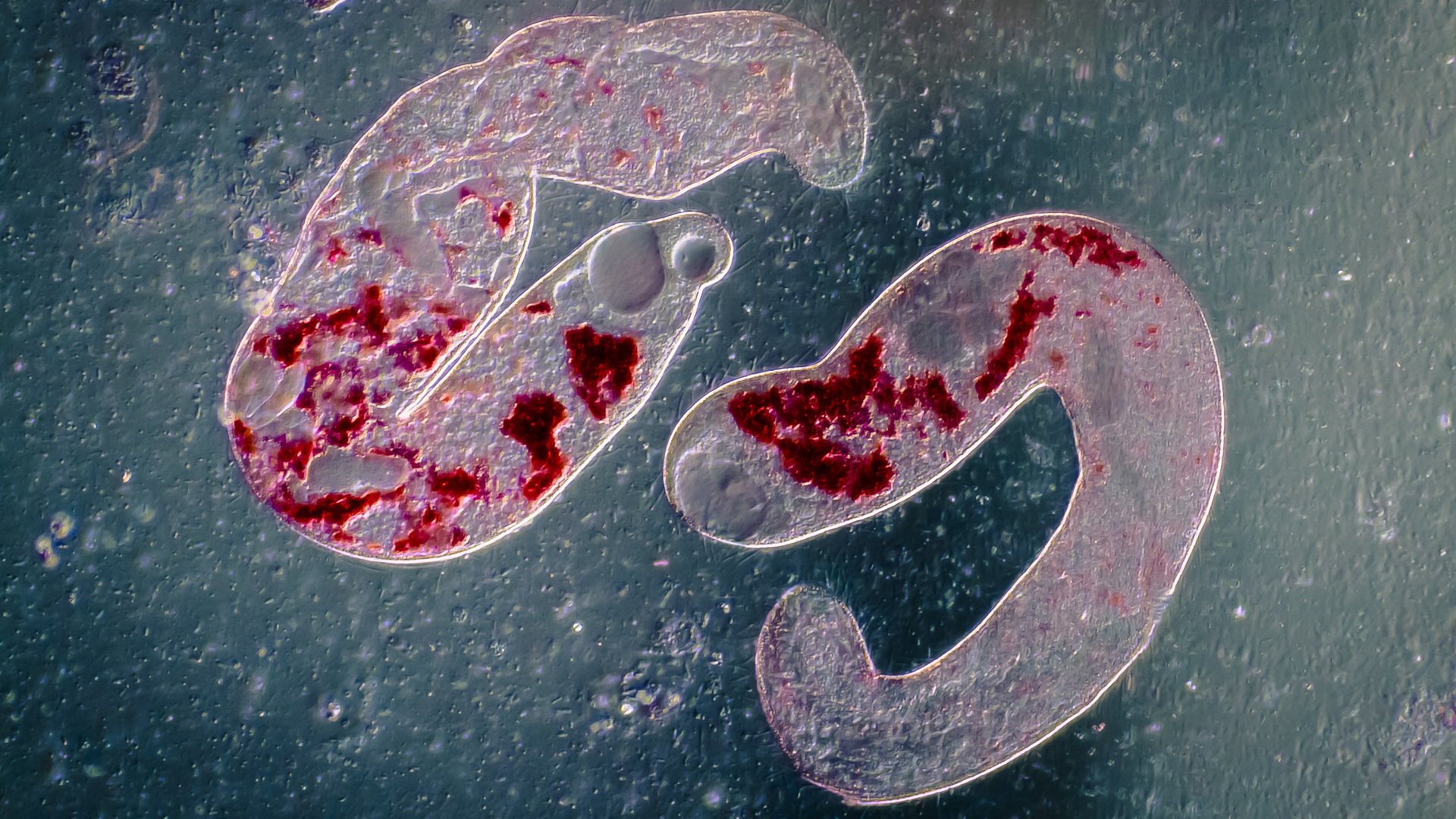Blepharisma japonicum is a protist that, as the name suggests, is native to Japan. The name of this genus comes from the Greek blepharum which means "eyelash" and refers to the cilia on the cell membrane of the organism.
Blepharisma japonicum is a protist that, as the name suggests, is native to Japan. The name of this genus comes from the Greek blepharum which means "eyelash" and refers to the cilia on the cell membrane of the organism.
Versatile pigments
Through the microscope, the protist B. japonicum has a light red to pink color. This is due to a large amount of pigments (tiny coloured spheres) that are located on the inside of the cell membrane. This pigment is named after the organism, blepharismin, and it plays a dual role. First, a defensive role; it is toxic for organisms that consider B. japonicum as prey. But it is also very light sensitive and involved in the avoidance of light. A population of B. japonicum always gathers in the darkest place it has available.
Sexual pheromones
B. japonicum usually reproduces asexually, through cell division. But sexual reproduction also occurs. There are two cell types: mating type I and mating type II. Both types produce their own pheromone to which the other reacts. These pheromones are essential for reproduction as they cause structural changes in the cells. Without these changes, mating is not possible.

